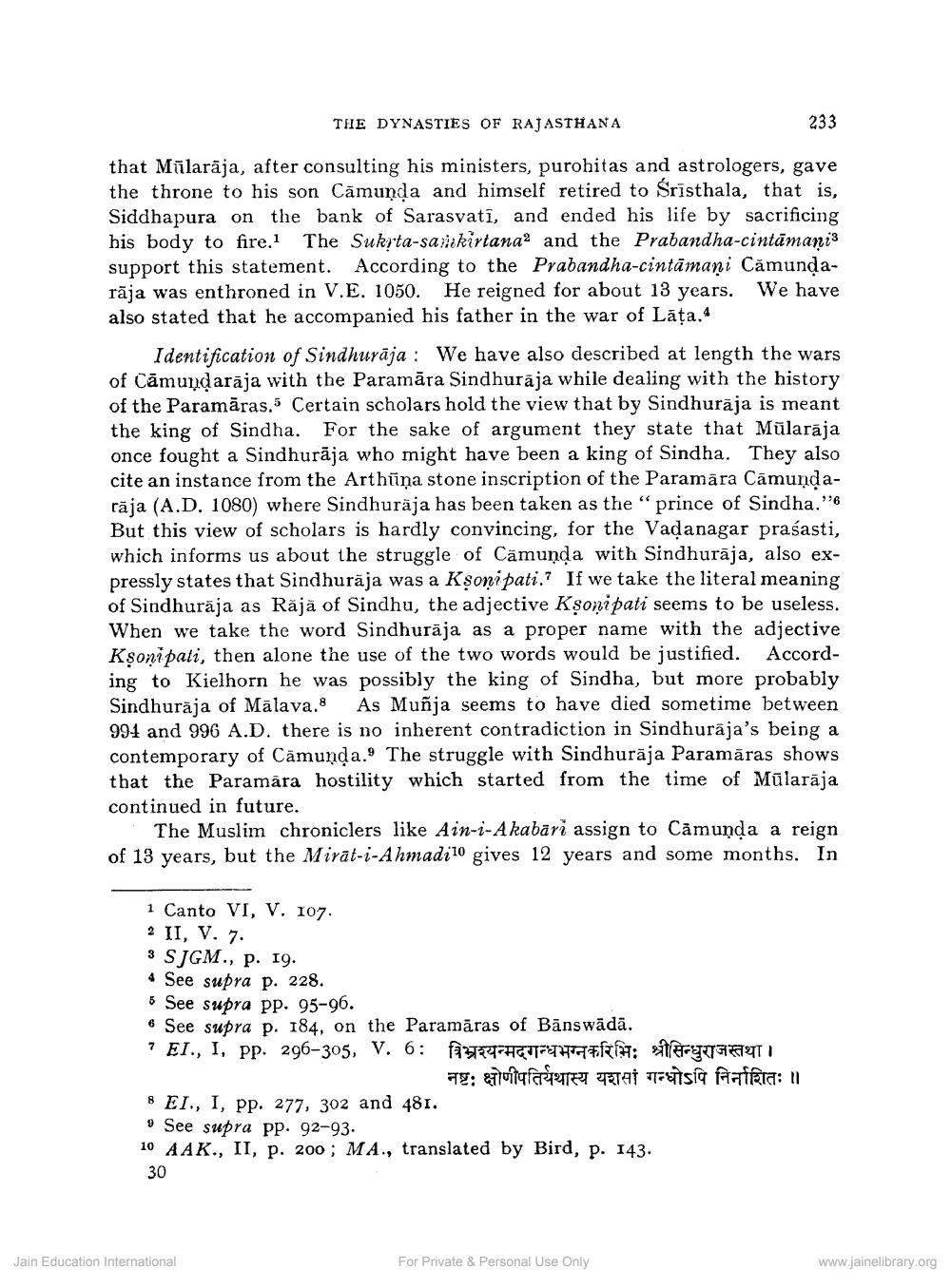________________
THE DYNASTIES OF RAJASTHANA
233
that Mūlarāja, after consulting his ministers, purohitas and astrologers, gave the throne to his son Cāmunda and himself retired to Śrīsthala, that is, Siddhapura on the bank of Sarasvati, and ended his life by sacrificing his body to fire.1 The Sukrta-sankirtana and the Prabandha-cintamani3 support this statement. According to the Prabandha-cintāmani Cămundarāja was enthroned in V.E. 1050. He reigned for about 13 years. We have also stated that he accompanied his father in the war of Lāța.
Identification of Sindhurāja : We have also described at length the wars of Cāmundarāja with the Paramāra Sindhuraja while dealing with the history of the Paramāras,5 Certain scholars hold the view that by Sindhurāja is meant the king of Sindha. For the sake of argument they state that Mūlarāja once fought a Sindhurāja who might have been a king of Sindha. They also cite an instance from the Arthūņa stone inscription of the Paramāra Cāmundarāja (A.D. 1080) where Sindhuraja has been taken as the “prince of Sindha."6 But this view of scholars is hardly convincing, for the Vadanagar prasasti, which informs us about the struggle of Cāmunda with Sindhurāja, also expressly states that Sindhurāja was a Ksoni pati.? If we take the literal meaning of Sindhurāja as Räjä of Sindhu, the adjective Ksoni pati seems to be useless. When we take the word Sindhurāja as a proper name with the adjective Ksonipati, then alone the use of the two words would be justified. According to Kielhorn he was possibly the king of Sindha, but more probably Sindhuraja of Mālava.8 As Muñja seems to have died sometime between 994 and 996 A.D. there is no inherent contradiction in Sindhurāja's being a contemporary of Camunda.9 The struggle with Sindhurāja Paramāras shows that the Paramāra hostility which started from the time of Mūlarāja continued in future.
The Muslim chroniclers like Ain-i-A kabāri assign to Cāmunda a reign of 13 years, but the Mirāt-i-Ahmadi10 gives 12 years and some months. In
1 Canto VI, V. 107. 2 II, V. 7. 3 SJGM., p. 19. * See supra p. 228. 5 See supra pp. 95-96. • See supra p. 184, on the Paramāras of Bänswädā. ? EI, I, pp. 296-305, V. 6: THEUTT A: TATI
नष्टः क्षोणीपतियथास्य यशसा गन्धोऽपि नि शितः ॥ 8 EI, I, pp. 277, 302 and 481. 9 See supra pp. 92-93. 10 AAK., II, p. 200 ; MA., translated by Bird, p. 143. 30
Jain Education International
For Private & Personal Use Only
www.jainelibrary.org




